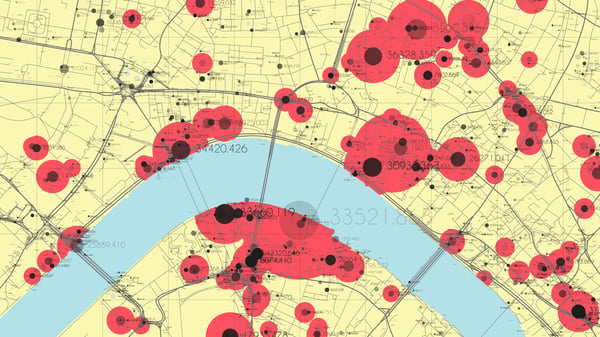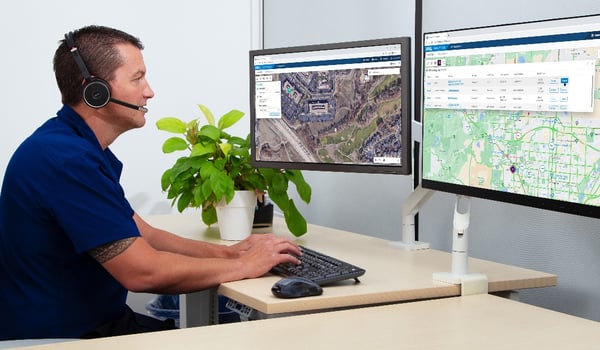4 Must-have Data Points for Dispatch-Billing Alignment and Maximum Reimbursement
Learning from Aviation Safety: Part 1 – Crew Resource Management
Has this ever happened to you: You’re the new person starting your first day at a service with a seasoned medic
Was this information valuable?

Has this ever happened to you: You’re the new person starting your first day at a service with a seasoned medic. You get your first call of the day, hop in the passenger seat and as the ambulance proceeds onto the roadway you reach over and “attempt” to turn the lights and siren on. Your hand doesn’t get far because your partner swats it away, gives you “the look” then tells you to never touch the controls in his ambulance again. Thinking this was isolated to inside his ambulance, you find out this behavior extended to patient care too. It was only your second call when you noticed he drew up a wrong dosage and when you discreetly mentioned it to him, again you got “the look.” This was followed up by a “if you want to keep working here” lecture afterwards. Sound familiar?
This type of interpersonal dynamics is not the norm in EMS, although it would be hard pressed to say it doesn’t happen either. All it takes is one time to harm a patient or get into a crash because you didn’t speak up and your career will be short lived. Count on it.

History of a Culture of Safety in Aviation
Not too many years ago commercial aviation had its challenges when post-crash investigations began noticing a common problem of poor communication in the cockpit. They believed that the authoritarian cockpit culture started the chain of events that lead to many crashes. This culture discouraged co-pilots to question the captains if they observed them making mistakes. It wasn’t until after the 1977 Tenerife runway crash of two 747s that killed 585 people that the cockpit culture was addressed.
After the Tenerife crash, the National Transportation Safety Board began making recommendations based on research by NASA that addressed this concern. Soon airlines were adapting new training procedures called Cockpit Crew Resource Management or CRM. This new procedure focused on crew communication, decision making and leadership, which would eventually lead to a much safer operation of the aircraft.
So how does this work? One of the first steps is fostering a culture in an organization where authority can be respectfully questioned. Additionally, crews are encouraged to self-report when they made mistakes without fear of reprisal from leadership. If this is beginning to sound like Just Culture you are exactly right. The roots of Just Culture had its start in aviation.
How Does Crew Resource Management Work?
In public safety there have been a long and traditional hierarchies, which questioning authority is extremely frowned upon. Although when it comes to safety, the proper crew resource management training can overcome this concern. Let’s take a look on how this can work. Todd Bishop1 who is a crew resource management expert has developed a five-step process of inquiry and advocacy.
- Opening or attention getter – Address the individual: “Hey Chief,” or “Captain Smith,” or “Bob,” or whatever name or title will get the person’s attention.
- State your concern – Express your analysis of the situation in a direct manner while owning your emotions about it. “I’m concerned that we may not have enough fuel to fly around this storm system,” or “I’m worried that the roof might collapse.”
- State the problem as you see it – “we’re showing only 40 minutes of fuel left,” or “This building has a lightweight steel truss roof, and we may have fire extension into the roof structure.”
- State a solution – “Let’s divert to another airport and refuel,” or “I think we should pull some tiles and take a look with the thermal imaging camera before we commit crews inside.”
- Obtain agreement (or buy-in) – “Does that sound good to you, Captain?”
Healthcare is also adapting crew resource management in patient safety strategies. The agency for Healthcare Quality and Research (AHRQ) provides this training for healthcare organizations. You may have heard of or been trained in Team Strategies and Tools to Enhance Performance and Patient Safety (TeamSTEPPS), which has statistically shown to increase patient safety. All these great programs must be deep rooted or what I call “hard wired” in a culture of safety in order to be successful. If not, these strategies will fail.
What Would Crew Resource Management Look Like in EMS?
As an ambulance safety consultant, I’m always looking for new tactics and strategies to enhance the safe operation of the vehicle. I’m a firm believer that whoever is driving the ambulance does just that, drive. When both crew members are up front, the right seat person has an important safety responsibility. Think of the distractions that occur up front; Radio operation, MDT, siren (mode) operation and non-essential communication. Leave these tasks to the person who is not driving the ambulance. As for non-essential communication, there is another aviation safety strategy called silent cockpit. For commercial pilots this occurs below a certain altitude where the two pilots must keep their conversation limited to the safe operation of the aircraft.
In EMS, that could apply to emergent driving. I have several clients that employ this strategy and the feedback has been positive. I use several dash cam videos in my lectures where I emphasize the importance of crew resource management in emergent driving. One is an ambulance in emergent mode approaching an intersection while the driver is on the phone texting. Just before the intersection, his partner sees a car approaching on his side and starts yelling at the driver. Fortunately, they avoid a crash and the driver is heard saying “didn’t see them,” which his partner reply is “really!” In another video, an ambulance is in emergent mode while the two crew members are singing to the radio, one playing the air guitar when they crossed the center line and are side swiped a truck trailer.
Read "What Florida Hospital's Ground EMS Learned from their Partners in the Sky"
Take Your Safety Strategy to the Next Level
For the most part, good common sense and adherence to policies can certainly reduce risky driving. For those who want to take it to the next level with proven results, look at how you can take away some useful safety strategies from the aviation industry.
1. International Association of Fire Chiefs (2003). "Crew Resource Management: A positive change for the fire service" (PDF). Archived from the original (PDF) on 4 December 2010. Retrieved 6 September2010
Related Posts
How EMS Agencies Can Reframe Need and Refocus Resources With Geospatial Analytics
How To Minimize Radio Chatter and Reduce Guesswork With Smarter Dispatch Resource Management
ZOLL Pulse Blog
Subscribe to our blog and receive quality content that makes your job as an EMS & fire, hospital, or AR professional easier.
ZOLL Pulse Blog
Subscribe to our blog and receive quality content that makes your job as an EMS, fire, hospital, or AR professional easier.





